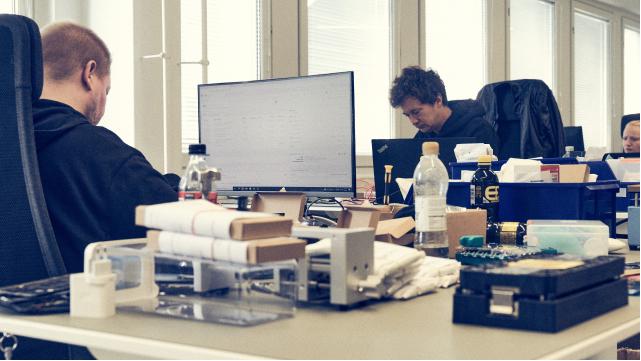Essential Guide to Web Application Development in Simple Terms
In today's digital era, web applications have become a vital part of our daily lives. They power our favorite social networks, streamline online shopping, and even assist our productivity. Developing these web applications requires a blend of technical skills and creativity. This article will walk you through the essentials of web application development in a straightforward manner, suitable for anyone interested in learning about this fascinating field.
What is Web Application Development?
Web application development involves creating application programs that run on remote servers and are delivered to users over the internet through web browsers. Unlike traditional software that needs to be installed on a local device, web applications can be accessed online, making them versatile and easily updatable.
Key Components of Web Applications
Web applications are built using three primary components:
1. Front-End (Client-Side)
- This is the visual part of the application that users interact with.
- Technologies Used: HTML for structure, CSS for styling, and JavaScript for interactivity.
- Frameworks and Libraries: Popular tools like React, Angular, and Vue.js help developers create dynamic interfaces.
2. Back-End (Server-Side)
- This component handles the server, application logic, and database.
- Languages and Frameworks: Common choices include Node.js, Python (with Django or Flask), Ruby on Rails, Java (Spring), and PHP (Laravel).
- Database Management: Databases such as MySQL, PostgreSQL, and MongoDB play a crucial role in storing data.
3. API (Application Programming Interface)
- APIs facilitate communication between different software components.
- Types of APIs: RESTful APIs and GraphQL are widely used for developing robust and scalable APIs.
Steps to Develop a Web Application
Let's break down the web application development process into several key steps:
1. Gather Requirements
- Stakeholder Interviews: Talk to those who have a stake in the project to understand its goals.
- User Stories: Detail what users need and expect from the application.
- Feasibility Analysis: Ensure the project can be completed within time and budget constraints.
2. Design Phase
- Wireframes and Mockups: Create simple sketches or models of the application's layout.
- Prototyping: Build interactive prototypes to test user interface (UI) and user experience (UX).
- System Architecture: Plan how different parts of the application will interact.
3. Development Phase
- Front-End Development: Use HTML, CSS, and JavaScript to build the user interface.
- Back-End Development: Write code for the server, application logic, and database integration.
- Integration: Ensure seamless communication between the front-end and back-end components.
4. Testing Phase
- Unit Testing: Test individual pieces of code to ensure they work correctly.
- Integration Testing: Check if different modules work together without issues.
- System Testing: Test the entire application as a whole.
- User Acceptance Testing (UAT): Let real users trial the application to identify any usability issues.
5. Deployment Phase
- Hosting: Choose a reliable hosting service like AWS, Heroku, or Azure.
- CI/CD Pipelines: Implement Continuous Integration/Continuous Deployment to streamline the release process.
- Monitoring: Use tools to keep track of application performance and detect any issues promptly.
6. Maintenance and Updates
- Performance Optimization: Regularly check and improve the application’s speed and efficiency.
- Security Updates: Keep the application secure by applying the latest patches.
- Feature Enhancements: Continuously add new features based on user feedback.
Emerging Trends in Web Application Development
To stay ahead in web development, it's essential to be aware of the latest trends:
- Progressive Web Apps (PWAs): Combining the best of web and mobile apps, PWAs offer offline access and fast load times.
- Serverless Architecture: This approach allows developers to focus on writing code without worrying about server management.
- Artificial Intelligence (AI) and Machine Learning (ML): Integrating AI and ML can enhance user experiences with personalized content and advanced analytics.
- Microservices: Breaking down applications into smaller, independent services makes them easier to manage and scale.
Conclusion
Web application development is an exciting and evolving field that requires a mix of technology write for us creativity and technical know-how. By understanding the components of web applications and following a structured development process









Comments